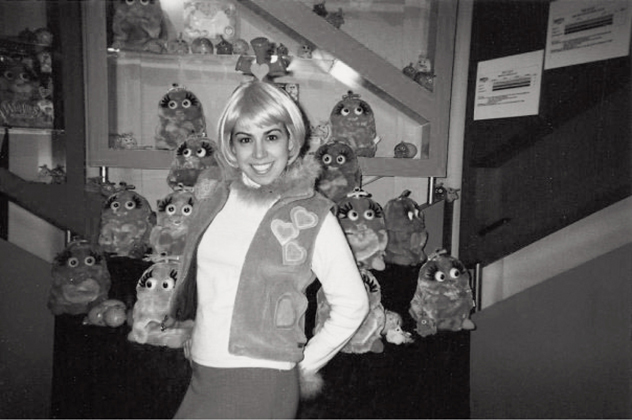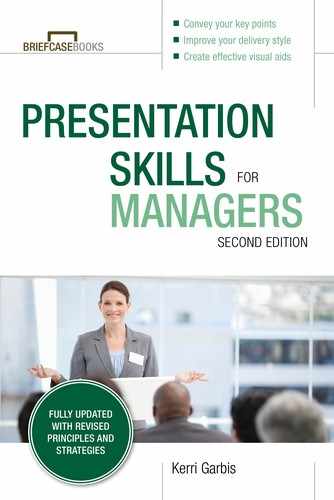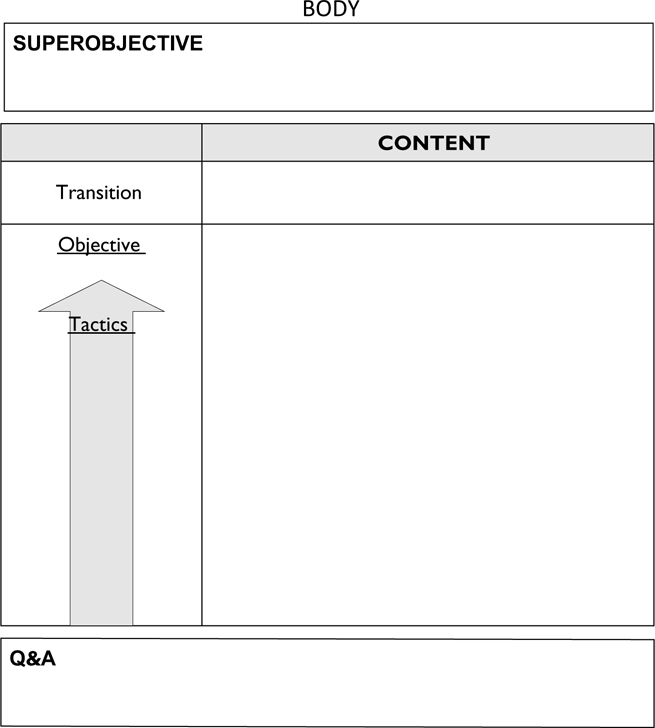
Q&A Management
One of the many jobs I had while living in NYC, in between my actor gigs, was at Toy Fair—a yearly event for everyone and everything in the toy industry. Distributors and manufacturers often hire actors to demo their newest toys to potential buyers. This is where toy trends are born.
One year, I got hired to demo a new touch-and-talk fluffy animal-like creature. I was given a 60-second script that explained its unique features, and I delivered this pitch to different groups of potential buyers as they walked by on the trade show floor.
As I was saying my spiel for what felt like the millionth time that week, a large group of buyers interrupted me and started peppering me with questions, all at the same time:
“How many batteries does it take?”
“How long will the batteries last?”
“Does it sing any songs?”
“How many songs does it sing?”
“Can you make it sing along with you?”
Typically at these events, there’s a representative from the toy company close by who’ll step in to answer any prospect questions. However, for some reason, no one was around. It was just me, the fluff ball, and a lot of questions. I failed their inquisition miserably.
I didn’t know how to answer questions well or, more important, how to not answer questions well. I had no idea how to control my audience, and I’m pretty sure I stood there saying a lot of “uhhhhhs” (Figure 11-1). This chapter will help you fare much better during the Q&A portion of your presentation than I did way back when.

Figure 11-1. This is me in a (purple) wig at Toy Fair prior to my Q&A fail
Planning for Audience Questions
Q&A’s can be daunting. There’s a bit of a free-fall aspect to them; anything could happen. Think of a political candidate out stumping for an upcoming election. Q&A sessions are often the most volatile—or in a positive light, impactful—portions of their appearance. The public could say or do anything, good or bad. The candidates put a lot of forethought and planning into preparing for the Q&A. If you want to make the most of this part of your presentation, you should do the same.
The first step in your planning is to decide when you want to invite audience questions. There are three major options: you can do so throughout your presentation, at the end of each section (usually related to each objective), or during a specific Q&A portion near your presentation’s conclusion. Whichever way you choose to take questions, you must inform your audience during the Expectations portion of your introduction. (See Chapter 6.)
There isn’t a right, wrong, or “best” way to go when it comes to this choice. This is truly up to you. You might have to try different styles to find the one that you’re most comfortable with as a presenter. No matter what you choose, I say again: you must let your audience know the plan.
Free-Form Q&A: Inviting Questions at Any Time
Personally, I prefer inviting the audience to ask questions at any time they would like to. I think this keeps sessions interactive and exciting for me, and there’s usually not a risk of leaving anyone with unanswered questions.
Periodic Q&A: Taking Questions at the End of Each Section
This style is the hybrid of the free-form Q&A and the more controlled preconclusion Q&A. This is a good option to take if you want to “test the waters” of a free-form session but not fully commit.
Should you choose to embrace a periodic Q&A, use an additional Blueprint page to help you plan for questions on a section-by-section basis, as shown in Figure 11-2.
Figure 11-2. Periodic Q&A Blueprint page
Preconclusion Q&A: Leaving All Questions Until the End
I’ve seen way too many presenters do a stellar job with their content, give a fantastic conclusion (including a super memorable button), and then defuse all of their hard work with a postconclusion Q&A. Half their audience leaves after the button (they think that’s the end!) and much of the other half tunes out entirely. For some people, the conclusion is permission to check out—whether physically or mentally. To avoid this pitfall, we recommend including the Q&A portion prior to the actual conclusion of your presentation.
If you’re opting for a preconclusion Q&A, use an additional Blueprint page to plan and organize your thoughts (Figure 11-3).

Figure 11-3. Preconclusion Q&A Blueprint page
Of course you have the option to not take questions at all during a presentation. Just let your audience know. Setting the correct expectations for the audience is the key to making your Q&A, and entire presentation, a success.
Elements of a Good Answer
You’ve decided when to take questions. Now, how do you actually answer these questions? There’s no specific formula you absolutely have to apply when answering a question. (I do provide one below in case formulas really work for you.) However, you do need to draw on the knowledge you have as a subject-matter expert and couple that with all the presentation skills work you’ve done so far. Add some—or all—of these elements of a good answer, and you’re on your way to an impactful Q&A.
Don’t Begin with a Verbal Virus
You’ll notice this book is light on “don’ts.” I’m including one here because I feel that strongly about it. I want it to stick! Don’t begin an answer with a Verbal Virus. Beginning your answer with a Verbal Virus immediately lowers your credibility. Your audience will start to ask themselves, “Does he really know what he’s talking about?” While it’s definitely part of our human condition to want to fill any silences, simply uttering filler words or sounds while thinking of an answer is far less powerful than that moment of silence itself. Here are a few things you can do instead.
Pause. Just like we discussed in Chapter 2, immediately after a question is asked, and before you speak, take a pause. You’ll give your brain a chance to gather its thoughts, while maintaining credibility with your audience.
Clarify the Question If You Need To. There’s no harm in making sure you’re answering the actual question that’s been asked. Your credibility will be diminished if you answer a question that isn’t actually the one on the table, even if your answer is spot-on, perfect, and chock-full of amazing information. It may appear that you’re dodging an inquiry or lacking the particulars needed to answer. A simple moment to clarify when necessary (“What I hear you asking is ... Is that correct?”) makes all the difference.
Acknowledge. “Good question,” “Great question,” “What an interesting question,” or (my personal favorite) “Thank you for that question” are all phrases you can say to acknowledge the asker and buy a few seconds of thinking time.
Pause, Clarify, and Acknowledge are tools to help you avoid “umming” your way through an answer. They can also give a good structure to your comments during Q&A. Take time to rehearse answering questions using one—or all—of the techniques above, and see what feels best for you.
When It’s Important to Repeat a Question
I was sitting in one of the very last rows of the Wang Theatre in Boston, Massachusetts, watching my favorite National Public Radio host take questions from the audience after taping his live show. This guy is funny, charming, and smart. Sadly, I missed most of his witty answers because I was so preoccupied trying to figure out what he’d been asked.
The Wang is a huge theater, and he was only taking audience questions from the people in the orchestra section. For him, it made sense: it’s a gigantic space, and Mr. Radio Host wanted to actually hear what he was being asked.
From up in the “nosebleeds,” all I could discern of the questions was muffled talking. I knew there was a question but couldn’t make out a single word. At one point, Mr. Radio Host called on an audience member and intently listened to the question. Took a dramatic pause. Smiled. And said, “No.” The orchestra section erupted in uproarious laughter. My fellow “nosebleed” audience members looked bewildered and disappointed. Mr. Radio Host had let us down.
The questioner wasn’t thinking about the rest of the audience. He didn’t care if the people in the “cheap seats” (read: me) could hear the question. He just wanted to listen to what his favorite radio host had to say. It was the responsibility of Mr. Radio Host to repeat the question so the rest of the audience could hear, understand, and appreciate it.
As the presenter, your job is the same. Take control, and repeat questions that might be missed in a large (or acoustically difficult) space. If you only remember one thing from this chapter, please remember to always repeat the question in such a situation.
Repeating the question may feel a little awkward at first, so it’s a technique you want to practice. However, it’s the number one thing that you can do during a Q&A to make a more positive impact on your audience.
Answer to All
As sincere presenters, our instincts are to answer the question that was asked of us by speaking directly to the person who asked it. If you’re having a one-on-one conversation, this makes sense. When you’re answering questions to a group of two or more, you need to answer to all.
After you’ve clarified or repeated the question as necessary, the goal is to present your answer to the entire audience. If you’re speaking in front of a large crowd, you’ll probably give very little direct eye contact and attention to the person who asked the initial question. You won’t need to work hard to hold his attention, since he wants to know your answer. He’ll continue to look at you and listen to you. You want to include the rest of the room in your answer rather than exclude those who are just listening to your Q&A.
Your job now, in addition to answering the question that was asked, is to continue to engage your audience. When you answer to the entire group, you do just that. As a result, you should reduce the number of people “tuning out” during Q&A.
Check for Understanding
For the sake of argument, let’s say that now you’ve presented your answer using some or all of the elements above. Terrific job, well done! Next, we need to ensure that the question has indeed been answered. We do so by simply asking the questioner “Does that answer your question?”
Hopefully you’ll receive a resounding “Yes!” and you can move on to the next question or portion of your presentation. If you do get a “No,” you can take another stab at answering the question, ask for further clarification, or offer the unsatisfied audience member another solution.
How to Not Answer a Question
You may get questions that you don’t want to answer or, because of legal or disclosure reasons, you simply can’t answer. The key to handling this situation is acknowledgment with a simple, truthful response. You must recognize the question in some way or you’ll keep getting that same question. You may be perceived as dodgy, dishonest, or inauthentic.
If you can’t answer the question for legal/disclosure reasons, state the truth: “I can’t answer that question for legal reasons.”
If you don’t know the answer, admit it with a resolve: “I don’t know the answer to that, but I can do some research and get back to you.” Or, you can throw the question back to the audience and facilitate a discussion: “What do you think about that question? Does anyone have any thoughts?”
If the question is about something you’ll cover later in your presentation, keep it simple: “I’ll be covering that later.”
If the question is off-topic, whether unrelated to the subject or not of interest to your entire audience, offer to take it off-line: “Let’s discuss that later,” or “Send me that question, and we’ll set up some time to talk.”
The important thing to remember is that you absolutely do not have to answer every single question—but you do need to acknowledge them.
Rehearsing Q&A
While you can’t anticipate every single question that’s going to be asked of you, you can probably make some pretty good educated guesses. This is one of the tasks in your Audience Analysis, so at this point, you already have a list of possible questions you may receive. Use these for your rehearsal. Have a colleague read the questions out loud, one at a time, and practice answering each question with the guidelines laid out in this chapter.
Keep in mind, this approach shouldn’t make your answers sound stodgy or overrehearsed. On the contrary, the more comfortable you are with some of the ins and outs of the question, the more you can open yourself up to spontaneity in the moment. Whatever you do, avoid the urge to cut corners in your rehearsal by simply saying, “Oh, then I’ll say something like this or this.” Actually give the answer. The more intangibles you can remove from the equation, the better.
The more specific your audience questions, the better. This helps you take even more of that free-fall feeling out of your Q&A.
Once you’ve practiced the questions you’ve brainstormed, take it one step further. Ask a colleague to provide you with some tough questions that may arise. They can be related to your industry, or not. The goal is to stretch your impromptu speech muscles a bit. You want to make sure they’re all warmed up for the actual presentation.
Every point in your Rehearsal Process should include some level of Q&A preparation. It’s that important. Remember, you’re not memorizing prepackaged answers. You should be familiarizing yourself with what may occur in your Q&A to allow for some magic when you’re on your feet.
Manager’s Checklist for Chapter 11
![]() Plan your Q&A process.
Plan your Q&A process.
![]() Decide when you will take questions.
Decide when you will take questions.
![]() Inform your audience during the Expectations portion of your introduction.
Inform your audience during the Expectations portion of your introduction.
![]() Construct effective answers.
Construct effective answers.
![]() Pause to avoid Verbal Viruses.
Pause to avoid Verbal Viruses.
![]() Clarify, acknowledge, and repeat questions as necessary.
Clarify, acknowledge, and repeat questions as necessary.
![]() Answer to everyone in the room, not just the asker.
Answer to everyone in the room, not just the asker.
![]() Check for understanding.
Check for understanding.
![]() Be prepared to not answer.
Be prepared to not answer.
![]() Acknowledge all questions.
Acknowledge all questions.
![]() Be honest with your reason for not responding.
Be honest with your reason for not responding.
![]() Rehearse your Q&A as you do the rest of your presentation.
Rehearse your Q&A as you do the rest of your presentation.
![]() Use the questions you came up with during your Audience Analysis to prepare.
Use the questions you came up with during your Audience Analysis to prepare.
![]() Ask a colleague for additional tough questions.
Ask a colleague for additional tough questions.
![]() Build enough comfort with potential questions, but avoid memorization.
Build enough comfort with potential questions, but avoid memorization.








